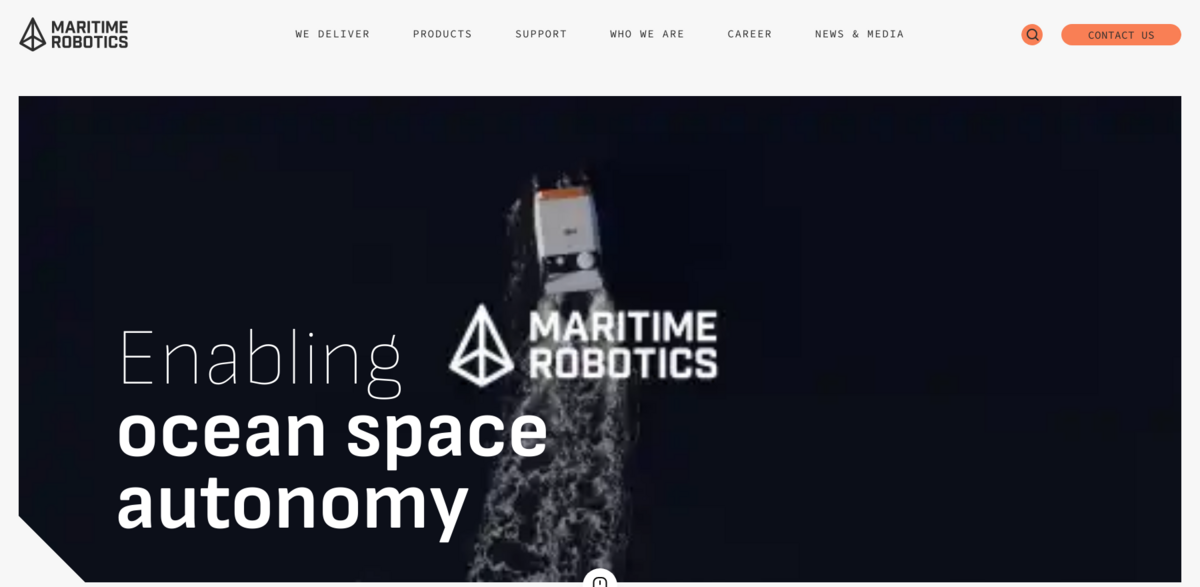What is the Maritime Robotics Project?
Maritime Robotics is a leading provider of autonomous navigation systems and Uncrewed Surface Vessels (USVs). For nearly two decades, it has been delivering innovative solutions worldwide, making autonomous technology more accessible to the maritime industry. Specializing in maritime autonomy for surface vessels, the project focuses on a wide range of applications—from marine mapping and surveying to oceanographic data collection, transportation, and maritime surveillance and inspection. The ultimate goal? Enabling safe, sustainable maritime operations with cost-effective and reliable autonomous solutions.
Main Benefits of Maritime Robotics
Here are some key figures and facts that highlight the impact and scope of the project:
- Nearly 20 years of experience since 2005 in developing autonomous navigation systems.
- Serving diverse industries including Marine Science and Engineering, Defence and Security, Energy, and Transportation.
- Core technology: Autonomous Navigation System, which can be used as a modular system for third-party vessels or integrated into Maritime Robotics’ own USVs.
- Headquarters located in Trondheim, Norway, next to the world’s first regulated test area for autonomous ships since 2016.
- Assembly and integration facility situated just across the Trondheim Fjord, ensuring seamless production of turn-key USVs.
Innovative Technology at the Core
The heart of Maritime Robotics lies in its Autonomous Navigation System. This system is designed to facilitate maritime autonomy by enabling vessels to navigate independently. It’s flexible—either as a standalone modular system that can be fitted onto third-party vessels or as an integrated part of Maritime Robotics’ own USVs. This dual approach means customers can easily tap into the benefits of autonomous technology, gaining safer and more sustainable maritime operations without hassle.
Strategic Location and Facilities
Based in Trondheim, Norway, Maritime Robotics enjoys a strategic advantage. The city is home to the Trondheim Fjord, which has been the world’s first regulated test area for autonomous ships since 2016. This proximity allows for real-world testing and development in a controlled environment. Just across the fjord lies the company’s assembly and integration facility, where turn-key USVs are built and integrated—ensuring quality and innovation go hand in hand.
Exploring and Protecting Ocean Space
Ocean space refers to all marine environments—from surface waters to the seafloor and everything in between. It’s a vital part of Earth’s biosphere, playing a huge role in regulating climate, weather patterns, and global ecosystems. Plus, it’s a critical resource for global commerce, shipping routes, energy sources, and minerals. But exploring this vast, complex space isn’t easy with traditional methods. That’s where autonomous technology and uncrewed systems come in, transforming how we explore, understand, and manage the ocean space. Maritime Robotics is at the forefront, enabling safer, cost-effective, and more sustainable ocean operations.
Project Impact on Sustainable Development Goals (SDGs)
- SDG 9: Industry, Innovation, and Infrastructure – advancing maritime technology and infrastructure.
- SDG 13: Climate Action – minimizing environmental impact through sustainable operations.
- SDG 14: Life Below Water – enhancing ocean space monitoring and protection.
- SDG 7: Affordable and Clean Energy – supporting energy sector operations with autonomous vessels.
- SDG 11: Sustainable Cities and Communities – improving maritime transportation and safety.
Commitment to a Greener Future
Maritime Robotics isn’t just about technology—it’s about responsibility. The project is deeply committed to preserving the climate and continuously striving towards a greener world. This commitment is embedded in both the technology and expertise, aiming to develop products that minimize the ecological footprint of customers and the company alike. By pushing the boundaries of autonomous maritime solutions, Maritime Robotics is helping to redefine how the industry approaches sustainability, safety, and operational efficiency.





















